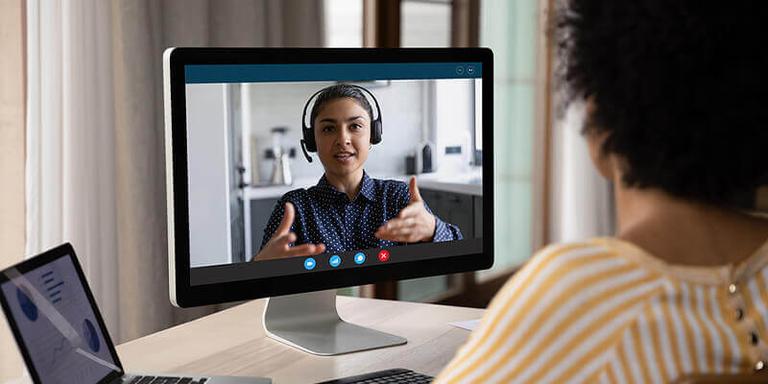
How to Conduct Remote Job Interviews
As the work world has evolved, so too has the hiring process. These days, more and more interviews are entirely online. And though it may seem like it’s still “just” an interview, the way you conduct a remote interview isn’t exactly the same as an in-person one.
To help you find the right candidate for any role without ever meeting them in real life, here’s how to conduct a remote job interview.
How to Conduct Remote Job Interviews
Do In-Advance Prep Work
Just like the candidate prepares for the interview, it’s equally important for you to do some prep work.
For example, if you’re using a video platform, test it out before the interview to ensure everything still works. Even if you’ve used it hundreds of times, you never know when you need to update the software or when a recent update broke things. A trial run at least 30 minutes before a remote interview gives you time to fix any problems you encounter or switch to plan B, like another platform or the phone.
To help ensure applicants have a positive experience, send them detailed information about the interview. For example, email them the specifics on accessing the platform, particularly if it’s not a common one. Even if it is something like Zoom, send the candidate information anyway.
Also, set expectations around the interview. Will there be more than one interviewer? A skills test? And will this be a camera-on or camera-off interview? Giving them a detailed outline of what to expect and with whom can help set their minds at ease and result in a better interview.
Check Yourself
When conducting on-camera interviews, you’re likely doing more than assessing the candidate’s fit for the role. You’re also assessing how they present themselves and how seriously they take the interview. If there’s a barking dog and dirty laundry in the background, you may have a less favorable impression of a candidate who is in a quiet location with a neat and clean (or blurred!) background.
And since interviews are a two-way street, the same advice applies to interviewers. Conducting the interview from a noisy coffee shop could send the message that you aren’t really interested in that applicant.
Use Multiple Platforms
One of the best parts of remote job interviews is that there is no one way to conduct them. You can use video, phone, or even a written method like Slack or email for a remote interview. What’s more, you can use a different interview platform (or even several) to suit your needs.
For example, a customer support representative needs excellent written and verbal communication skills. To help you evaluate these skills without a separate test, consider interviewing candidates using the phone and an instant-messaging platform to get a feel for how they communicate using these methods.
Likewise, some fully remote companies favor asynchronous communications over synchronous ones. To help candidates get acquainted with the company culture and decide if they are the right fit, consider conducting the interview entirely through email or even a shared document.
Pace Yourself
When you’re hiring for any position, you likely want to get the right candidate on board as soon as possible. And the advantage of remote interviewing is that not only can you widen your candidate pool, you can also see far more candidates in less time.
While it might seem like scheduling more interviews in a single day speeds things up, Zoom fatigue is real. Having back-to-back-to-back interviews may mean you’re not giving candidates the time and attention they deserve.
Build in some breaks between interviews to give yourself some much-needed recovery time. And consider scheduling fewer interviews per day to ensure you’re engaged with each.
The Remote Interview Difference
Though there are many similarities between a remote job interview and an in-person one, there are some key differences to be aware of. Employers who embrace remote interviews can make the candidate experience a pleasant one by preparing themselves and the candidates for the process.
For more advice on running a remote company, check out our Q and A’s.
Learn More
By Rachel Pelta | Categories: Build a Remote Team



